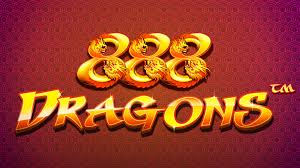Delving into the broader themes present in The Legend of Sleepy Hollow provides insight into the human experience as refracted through the lens of folklore. Themes such as fear, rivalry, and the intersection of reality and the supernatural illuminate the underlying motivations of the characters and the significance of their choices in Hi88
The Nature of Fear
Fear is a central theme woven throughout the fabric of Sleepy Hollow, manifesting in various forms. From the irrational fears that plague Ichabod Crane, who is both fascinated by and terrified of the ghostly lore, to the palpable dread experienced by the townspeople, the narrative encapsulates the multifaceted nature of fear.
Readmore: Game bài Hi88
Ichabod’s paranoia reflects a common human experience—how fear can warp perception, leading individuals to lose touch with reality. His encounter with the Headless Horseman serves as the ultimate manifestation of this theme, transforming him from a rational being into a quivering shell consumed by terror. This portrayal prompts readers to ponder the origins of their fears and how they can shape actions and relationships.
Moreover, the fear of the unknown extends beyond just the protagonist. The townsfolk’s adherence to folklore reveals a collective anxiety steeped in superstition. The celebration of Halloween, with its rituals and tales, illustrates how communities navigate their fears through storytelling. Rather than dismissing the supernatural, they embrace it, acknowledging its psychological grip on their lives.
Competition and Rivalry
At the core of The Legend of Sleepy Hollow lies an exploration of competition and rivalry. The conflicting desires of Ichabod and Brom highlight how ambition can drive individuals to extremes, leading to deceit and betrayal. Their contrasting approaches to courting Katrina exemplify the varied strategies employed in the pursuit of love and social standing.
Brom’s cunning tactics showcase the darker side of rivalry, as he resorts to trickery to eliminate his opponent. This aspect introduces a moral ambiguity to the tale—what lines are acceptable to cross in the name of love or pride? The fierce competition ultimately results in dire consequences for Ichabod, forcing readers to reckon with the dangers of obsession and envy.
Furthermore, the rivalry transcends the personal level, reflecting broader societal dynamics. The competition for resources and status mirrors the historical struggles of early American communities, where individual aspirations often collided with collective interests. The characters’ conflicts resonate with universal truths about human nature, emphasizing that rivalry can lead to unforeseen repercussions.
The Intersection of Reality and Myth
One of the most compelling aspects of The Legend of Sleepy Hollow is how it blurs the line between reality and myth. The supernatural elements interwoven with the mundane invite contemplation on the nature of belief and the power of storytelling.
Ichabod’s experiences illustrate the fragility of human perception—how the mind can conjure images of horror that transform the ordinary into the extraordinary. The Headless Horseman, a mere figment of folklore, becomes a tangible threat in Ichabod’s eyes, representing how myths can dictate behavior and influence decisions.
This theme resonates with readers as they consider the role of folklore in shaping cultural narratives. The act of storytelling itself becomes a powerful tool for interpreting reality, providing meaning and coherence to experiences that might otherwise remain chaotic and confusing. The tale underscores how humans have always sought to explain the unknown through myths, creating a shared understanding that connects generations.
Conclusion
The Legend of Sleepy Hollow weaves together historical context, vivid characters, and profound themes, creating a haunting narrative that endures through time. As readers traverse the fog-laden landscape of Sleepy Hollow, they uncover a tale rich with insights about the human condition, our fears, and the complexities of relationships.
Irving’s ability to blend humor with terror, romantic longing with rivalry, ensures that this tale remains relevant today. The Tales of Sleepy Hollow serve as a reminder of the power of storytelling, illuminating the depths of the human experience while inviting us to confront our fears and question our perceptions of reality.
As we reflect upon the lessons embedded within this haunting tale, we recognize that the legends we tell—whether born from truth or fiction—carry profound significance, shaping our identities, culture, and understanding of the world around us. The legacy of Sleepy Hollow continues to inspire, reminding us that every whisper carried by the wind may hold a story worth telling.









